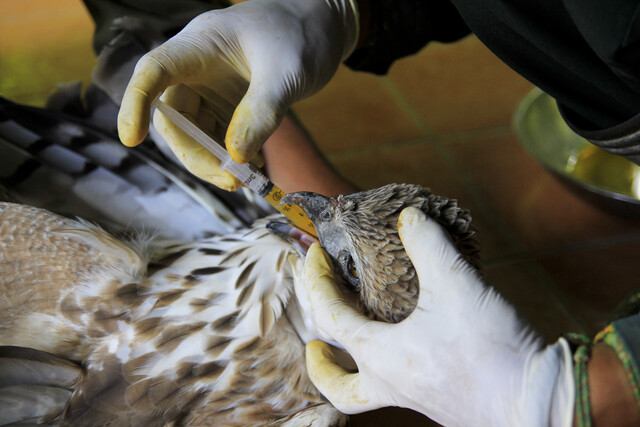A business plan is a roadmap leading from where you are now to where you want to be with your business. It is essential to have a business plan if you will need to borrow money from a lender for your dog walking or pet sitting business; however, even if you do not, a business plan is a good idea. It will keep you focused, motivated, and on track. It also gives you the opportunity to clarify what you need, how you plan to set up your business, and your marketing strategy. As your business grows, you can change your business plan to accommodate your growth.
If you do need to take out a loan, a bank or credit union will require a written business plan that clearly outlines your plan for the business and demonstrates your understanding of what is needed and in terms of time, money, and commitment. The more detailed, realistic, and well thought out your business plan is, the more likely it is that a lending institution will consider you a good risk for a loan.
It is tempting to want to move straight to the furry, fuzzy, fun stuff, but you need to treat your pet sitting or dog walking business seriously, if you want it to be successful. Future chapters will address everything you need to know about animal behavior, taking care of dogs and cats, working with exotic pets, and walking dogs properly. For now, let us establish the details of a proper business.
The Basics of a Business Plan
A business plan is an outline that indicates that you have put thought and planning into everything from budgeting to advertising for your small business. It does not have to be elaborate or complex, particularly for a business such as dog walking, where your supplies are simple and, at first, it will be a one-woman or one-man show.
The main components of a business plan include:
|
� Reasons for the Business. � Your Credentials. � Marketing Plan. � Competition. � Financial Plan. � Business and Office Set Up. � Action Plan and Proposed Dates |
Reasons for the Business
This can simply be a few paragraphs explaining why you have decided to go into the dog walking or pet sitting business. This could include your fulfillment working with animals, the need for such a service in the community, and why you are suited to the job, as well as why the job is right for you. You could also mention the personal strengths you bring to your role as the business owner (dependability, energy level, and so forth).
This section should demonstrate to others why this business is the perfect fit for you.
Credentials
Here is where you sell yourself professionally. Open on your strongest points, any professional training, from dog obedience training to shadowing your veterinarian, or other dog walkers and pet sitters is a strong indication of your dedication and seriousness. It also shows that you have educated yourself about animal behavior and care. Also mention any CPR and first aid courses taken including any certificates or diplomas, and where you received them.
Do not forget to mention training that is not directly related to animals. Computer training (including on the job training with past employers), bookkeeping, accounting, and business related courses will all impress lenders and will remind you and others that you have the knowledge to run the day-to-day workings of a business.
Acknowledge what you do not know and how you will address these issues. If you need a better understanding of tax laws for a small business, indicate that you intend to take a course from your local Small Business Development Center or through your local Chamber of Commerce. You can also indicate that details will be outlined in your Action Plan (more on this later).
Marketing Plan
A marketing plan is not solely about how you plan to advertise your business. You must first demonstrate that you understand the demographics of your area and the potential that your business has in relation to them. Start your marketing section with a few paragraphs outlining the demographics of your region, how they reflect the nature of pet ownership, and the need for your type of service. Are there many upwardly mobile career couples? Many busy suburban families? In addition, do your homework on statistics, and check with your local town clerk to see how many licensed dog owners there are. Talk to veterinarians and groomers.
You will have some subcategories under marketing, including promotions, advertising, and your website. For each of these, describe briefly how you will use these tools to generate interest in your services and what types of promotions and advertisements you plan on using. Describe the information you will be using on your website and how you plan to make sure it shows up on the search engines, and elsewhere. Address any concerns you have about the costs of various marketing techniques and how you plan to balance them both short term and long term as you start up your service.
This is one of the most difficult aspects of writing a business plan for anyone, putting down on paper the details of their financial situation. You need to write down in honest terms your current cash flow, including income, all expenses, any deficits, alternative possibilities for income, and all outstanding debts (including credit cards).
Next, you will need to outline what your financial plans are in terms of additional banking needs for your new business. At the very least, you will need to open a separate business checking account, even if you are a sole proprietor business. You may want to determine if you are going to accept credit cards or not, whether you want to accept personal checks, and if so, if you will accept checks that are from out of state banks. Will you be applying for a company credit card for making business purchases of supplies for your business?
Next, you will need a subcategory for your Equipment Needs such as spare leashes, office equipment, a computer, filing cabinet, various forms and papers, dog and cat treats, and so forth.
Business and Office Set Up
Here is where you will outline the legal details of your business' registration with state and federal officials and any paperwork you should have filled out or are in the process of filling out for local permits or licensing. You can either contact your local clerk of courts or hire a small business attorney who can help you apply for all of the proper licensing that you will need for your location.
Insurance should also be covered. Liability insurance is necessary for any dog walker or pet sitter. Working with animals can easily lead to unexpected consequences, and owners will want to know that you are protected by insurance.
Action Plan
Your action plan will be a recap of all the other sections with an outline of when you expect to achieve various specific goals under each section. For instance, under "Marketing," your Action Plan might have:
Dog Walking Service.
� May 2009. Run quarter page advertisement in Sunday paper.
� August 2009. Have website fully functional.
Not all Business Plans are set up following the exact format that we have outlined. Most have essentially the same categories, but may use slightly different titles or arrange them somewhat differently. The important thing is to get your plans down on paper. It will clarify your plans and help you express yourself to others so that others can understand your vision. For help in writing a good Business Plan, you can always contact the Small Business Administration . There is also a wonderful non-profit organization called My Own Business that offers a fee course in writing Business Plans (including templates!) .
Insurance
It is crucial that you are covered by insurance that will protect you for any losses incurred from fire, theft, or unexpected occurrences during the course of doing business. You will need to check into coverage for your office, which will probably be in your home for a pet sitting or dog walking business. In most cases, since this will probably simply be a room in your home or even, at first, a corner of a room, you will be able to add what is called an insurance rider to your homeowner's insurance. Talk to your insurance agent and be sure you have coverage added that will specifically cover the replacement cost for loss or damage to any equipment you use in the course of doing business.
Your automobile will also need complete coverage, including liability coverage for any damage or injury done while you are using your vehicle to conduct business. Since you will frequently be transporting animals in your car, this is particularly important, as any sudden movement by an animal can cause an accident that could harm them, you, or someone else.
Liability Insurance for the business itself may be difficult to obtain through some agencies unless they are knowledgeable about the pet care industry. Do some shopping around and compare the policies you are offered. Dog walking and pet sitting liability insurance must cover you for damages to every individual client property you visit, the possibility of injury to each pet you take care of, and injury to clients and visitors on their premises, while you are caring for their pets as a pet sitter as well as any injury caused while you are out and about walking the animals.
Liability insurance is particularly important because the value of a pet can often be far higher than its original purchase price; show dogs are worth tens of thousands of dollars in some cases. If a valuable or beloved exotic lizard is injured while you are caring for it, an owner may insist that it undergo surgery at your expense to save its life rather than have it euthanized. In addition, of course, if a child is attacked by a dog that you lose control of, medical care can be astronomical.
If you can afford the coverage, it is not unreasonable to get liability coverage of one million dollars for your business. If you cannot find the coverage you need through an agent or an insurance broker you know, contact either the National Association of Professional Pet Sitters or Pet Sitters International for information on their liability insurance programs.
Professional Organization
In the first few weeks of months as a pet sitter or dog walker, you will probably have a trickle of clients and be able to organize your schedule easily. Once word spreads about your business, however, you will quickly learn that things can get complicated. If you do not have an excellent scheduling plan in place and a proper fee schedule already set up, you can very quickly become disorganized and overwhelmed. Setting up a formalized fee schedule and organizing your schedule so that there are no mix-ups and you do not run late, leaving clients in a bind, are all part of being professional and reliable.
Fees
Determining the fees that you want to charge for your services will rely on a number of factors. If there are other businesses (hopefully not too many!) in your area offering similar services, look at what they are charging. You want to be competitive, but you do not want to undercut yourself so that you cannot make a reasonable living. Remember that you will need to factor in your expenses, including advertising, promotions, your time, gasoline, and so forth.
Fees will vary widely depending on the area of the country you are in. In Minnesota, the fees will be lower than they are in New York or Los Angeles, cost of living and salary differences have a huge impact on what you can charge. You can also talk to other pet care professionals such as groomers, boarding kennels, and veterinarians and see if they have suggestions. Networking with them will help you later as well; they can be valuable contacts and referrals. Even kennels will learn to appreciate you when they are overbooked at the holidays and are able to refer individuals to your service rather than simply turning them away.
What Will You Offer?
You need to decide what services you are going to offer as a pet sitter or dog walker. Will you watch all types of animals, including exotic pets such as rats, tropical birds, and snakes or are you going to limit yourself to dogs, cats, and the occasional hamster? What will be included in a full 24 hours of pet sitting, two visits per day, feeding, and an evening walk? How long will each visit last? Will you also bring in the mail, water the plants, and other minor chores?
Many dog sitters plan on each in-home visit lasting at least 30 minutes so they can interact with the pets, giving them some affection, and face-to-face time. Accordingly, they charge by the half-hour and add a small additional fee in 15-minute increments for anything over the half-hour if a pet owner wants more time spent on each visit.
Some of the most common services offered by pet sitters include:
|
� In-home visits for pet owners who work (usually two visits each day). � Pet sitting that includes two daily visits and an evening visit while owners are on vacation. � Feeding and watering. � Pet taxi service to veterinarians, groomers, and others. � Overnight care, usually limited and at the pet sitter's discretion. � Dog walking. � Waste cleanup (kitty litter cleaning, dog poop cleanup, and more). |
Pet Sitting
Pet sitting itself, which is watching pets for anywhere from a few days to a month or more while the owner is out of town, will usually be the backbone of your Pet Sitting business. When you are pet sitting, you will be visiting the homes of your clients every day at least three times a day, morning, afternoon, and evening, to make sure animals are properly fed and exercised and have ample opportunity to interact with you. Be sure that you make clear to your customers what is included with each visit so that they understand the value of what they are paying for. Most pet sitters will spend time not only walking or playing with their charges, they will also do small chores that are part of "house sitting," such as bringing in the mail, watering plants, opening and closing curtains, and quickly checking rooms. You may want to offer to brush dogs or cats if you will be watching them for several days.
You will have a fairly straightforward rate sheet for dog walking, but you do want to detail what is involved in a typical dog walking excursion. You may want to break out some pricing, particularly if you will be offering your services in an area where there are dog parks that offer off-leash areas. In these areas, if you are watching more than one dog at the same time while they are playing off-leash, you are taking on an enormous responsibility and may want to charge an additional service fee for taking dogs to this type of Dog Park.
If you have a client who wants their dog walked alone (that is, they are asking that you never walk another dog at the same time), you should explain that you must charge enough to make up the difference. If you routinely walk four dogs at once, the client must be willing to pay enough to make up for the three additional spots that would have been filled by other dogs. In most cases, people are happy to have their dogs walked in a small group as long as they know you can control the dogs; it gives their pets a chance to interact with other animals and make new canine friends. When you can, develop a routine where you are walking the same dogs together at the same time each day so that they get to know each other and look forward to socializing together.
The Rate Sheet xxxxxxxx
When you do make your rate sheet, keep it neat and simple. List the services you are offering, what is included with each, and the rate. If you need to clarify anything, keep this relatively simple as well. For instance, many pet sitters offer a package rate for multiple pets, and dog walkers will offer a reduced rate to walk two dogs owned by one client.
A great deal of your work may be over the holidays. Many pet sitters charge a premium for their services by charging an additional 10- to 20 percent or adding a flat amount such as $10 additional each day for all major holidays. If you decide to do this, be sure you individually list which holidays fall under this category to avoid any confusion.
You can create your own rate sheets quickly and easily on your home computer and print them out to have on hand for prospective clients. If you have a color printer, try adding a few nice graphics and your logo if you have one. Be sure your rate sheets also have your contact information clearly displayed so that people can contact you for more information.
Keeping an accurate schedule can be the difference between success and failure as either a dog walker or pet sitter. With several different clients to visit each day and numerous animals to care for, organization of each day's activities is essential. You will come to rely on a carefully recorded schedule to keep you on track so that you know where you are supposed to be and what you should be doing at any given time.
A computerized calendar is an excellent way to go, particularly if you can download your calendar to your Blackberry or cell phone so that you always have it with you as you go from client to client. Some people are not comfortable with this method and prefer to keep a more traditional paper calendar that they can write on themselves. Whichever one works best for you is fine.
A good time saver in your home office is to keep a chalk board or dry erase board on the wall that is marked out as a monthly or weekly calendar as well. This is a wonderful at a glance way to keep track of your day as you come in and out between appointments without having to log onto your computer. It is also a great place to jot down quick reminders to yourself or right down phone messages until you can get to them.
Keep in mind that you will need to schedule enough time for each in-home visit to allow for getting to and from the client's home and any activities scheduled for that visit such as feeding, walking, clean-up, and play time. At first you may not know how much time you will need between appointments when scheduling, invest in a good watch with stopwatch capabilities and keep track of everything until you can gauge accurately how much time you will need between appointments.
Dog walking can be tricky to schedule, always build in some time for changes in your schedule, particularly when you plan to go to a public park or other location where there may be other pets or people. If on a particular day there is too much activity at the park due to a festival or there are aggressive dogs in the area, you do not want to risk walking the pets in your care in that area and may end up spending some time finding a suitable dog walking alternative. You should also always build a bit of a cushion to deal with the inevitable, small inconveniences such as a dog that balks when you try to get him into the car with your first two passengers, and other times.
If you intend to walk multiple dogs at one time, take into consideration their size, temperaments, and your ability to control them when scheduling. In general, a reputable dog walker will never walk more than four or five dogs at a one time, and then only when he or she is capable of handling them properly.
Cancellation Policies
Consider an appropriate cancellation policy that protects you in the event clients cancel their appointment with you at the last moment. Some clients will take advantage of your good nature and call at the last minute to cancel a dog walking appointment. They need to understand that you are a professional and last minute cancellations cost you money.
You should note on your rate sheet or contract that there will be a partial charge if a scheduled appointment is cancelled without 24 hours notice unless there is a verifiable emergency. Also note that, if an appointment is missed with no notice at all, they will be expected to pay the full price for the missed appointment. Then make sure you follow through on this rule and charge anyone who cancels or misses an appointment. You will soon have the respect and courtesy of all your clients.
























